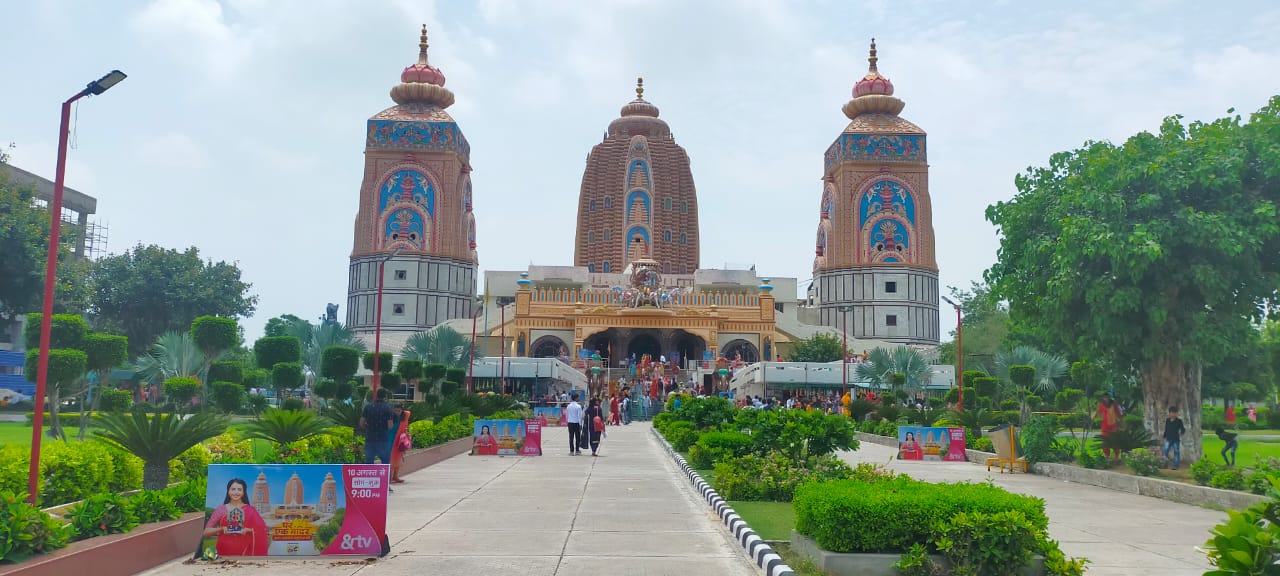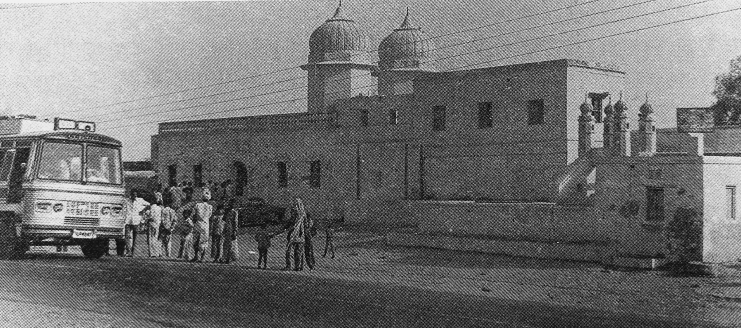Agroha is located 190 kilometers away from Delhi, on National Highway No. 10 (Maharaja Agrasen Raj Marg), near Hisar-Sirsa Road

Agroha is located 190 kilometers away from Delhi, along National Highway-10 (Maharaja Agrasen Raj Marg), on the banks of the Hisar-Sirsa road. When traveling from Delhi, one passes through Bahadurgarh, Sonepat, Rohtak, Hansi, and Hisar before reaching Agroha.
Agroha was once a vast, majestic, and prosperous city. Its prosperity and fame spread far and wide. When the bards sang its praises, listeners felt a surge of valor in their veins. Its fertile land and prosperity attracted foreigners incessantly. As a result, Agroha faced repeated invasions from Greeks, Shakas, Huns, Kushans, and Iranians. Despite this, the resilient kingdom of Agroda always defended itself valiantly and remained steadfast in protecting its city. However, the immense loss of life in frequent battles weakened the Agreya kingdom. People started leaving the city one by one. Finally, the invasion of Mohammad Ghori forced the residents of Agroha to leave their homeland forever. Fleeing with their lives and belongings, the people of Agroha moved forward and settled in neighboring regions such as Rajasthan, Punjab, Uttar Pradesh, Madhya Pradesh, etc., wherever fate took them. Eventually, they gradually spread across all parts of the country. As residents of Maharaja Agrasen's capital, people began to refer to themselves as Agarwals.
Agroha has been built and destroyed countless times. Now, it was lying as a desolate ruin for a long time. It was crying out loud, "O my descendants! You have played a significant role in the construction and development of the country. Wherever you have gone, there you have prospered, and there you have received the blessings of Goddess Lakshmi. You have built temples for worship, Dharamshalas for the comfort of travelers, schools and colleges for the spread of education, and established hospitals and pharmacies for the treatment of people's ailments. But now, look towards me as well. Rebuild and rejuvenate me too."
This zeal was first heard by Swami Brahmanand. Swami Brahmanand traveled from place to place, inspiring the Agarwals. With his inspiration, in the year 1915, Seth Bholaram Dalmia of Bhiwani established a cowshed in Agroha, and in the year 1939, Seth Ramjidas Vajoria of Kolkata built a dharamshala and temple here. Later, the Halwasiya Trust of Kolkata built a well and water fountain near the cowshed. With the efforts of Shri Kalicharan Keshan, the Bajoria family contributed one and a half lakh rupees and renovated this dharamshala in 1992.

In March 1973, Shri Rameshwardas Gupta initiated the publication of the monthly magazine Mangal-Milan. With attention to the principles of Mangal-Milan, a plan was devised in November 1974 to organize a nationwide conference in Delhi for the publishers, managers, editors, and journalists of leading newspapers and magazines across the country. The purpose of this conference was to contemplate on the role of newspapers and magazines in the current social context. Preparations for this journalist conference were commenced, invitations were sent to the managers, editors, and journalists of leading newspapers and magazines across the country. The majority of them also gave their consent and approval.

During this time, some journalists and activists suggested that instead of just a conference for journalists, a nationwide conference of Agarwals (a specific community) should be convened. To discuss this matter, Shri Rameshwardas Gupta called a meeting on January 1, 1975, inviting representatives of Agarwal associations and social activists in Delhi at Dharam Bhavan, South Extension, New Delhi. According to the decisions made at that meeting, an 'All India Agarwal Representatives Conference' was organized on April 5-6, 1975, at Dharam Bhavan South Extension, New Delhi.
In this way, the foundation stone was laid to unite, gather, and bring together approximately 2.5 crore Agarwals from across the country under one banner. This was done through the establishment of the All India Agarwal Conference proposed by the Mangal-Milan monthly magazine, founded by Shri Rameshwardas Gupta Dharmarth Trust.
On April 5-6, 1975, the All India Agarwal Representatives Conference organized by Shri Rameshwardas Gupta passed 18 resolutions. Among them, the fifth and ninth resolutions were related to Agroha.
In the fifth resolution, it was stated: This conference requests the Central Government and the Government of Haryana to recommence the excavation of the ruins of Agroha (district Hisar-Haryana) through their archaeological departments. It is within these ruins that the history of Maharaja Agrasen and the Agarwal community is concealed. Along with this, the conference also urges for the revival of Agroha, the birthplace of Agarwals.
The ninth resolution stated: This conference declares Agroha as the pilgrimage site for all Agarwals and urges all Agarwals to undertake a pilgrimage there. Furthermore, it suggests the organization of an annual Agrasen fair and Agrasen festival as well.
The Representative Conference concluded with unprecedented success. Subsequently, after five months, on September 6-7, 1975, an assembly of the Steering Committee of the conference was held in Nagpur. During this assembly, deliberations were made on the resolutions passed regarding Agroha in the Representative Conference. Mr. Shri Tilakraj Agarwal was appointed as the coordinator for the construction work in Agroha.
On October 12, 1975, Shri Shrikishan Modi, Shri Rameshwardas Gupta, late Shri Tilakraj Agarwal, late Shri Devkinandan Gupta, Shri Badriprasad Agarwal, Mrs. Swarajyamani Agarwal, Master Lakshminarayan Agarwal, late Shri Baboolal Salmevale, Vaidya Niranjan Lal Gautam, Shri Chaldevraj Agarwal, Shri M.M. Bansal, Shri Radhasharan Agarwal, and the late Shri Gangavishan Advocate from Sirsa went to Agroha. Together, they surveyed the hills of Agroha and inspected the land which was to be developed as a pilgrimage site.

Late Shri Tilakraj Agarwal

Late Shri Lakshminarayan Agarwal

Shri Badri Prasad Agarwal

Dr. Swarajyamani Agarwal
In December 1975, Shri Rameshwardas Gupta contacted the officials of the Income Tax Department to obtain a certificate (Form 40-G) for tax exemption for the conference. The officials, after reviewing the provisions of the conference, informed that Form 40-G could not be issued for it. Instead, they suggested forming a new trust for this purpose. Shri Rameshwardas Gupta then conceived the idea of creating a new trust for the construction and development of Agroha.
